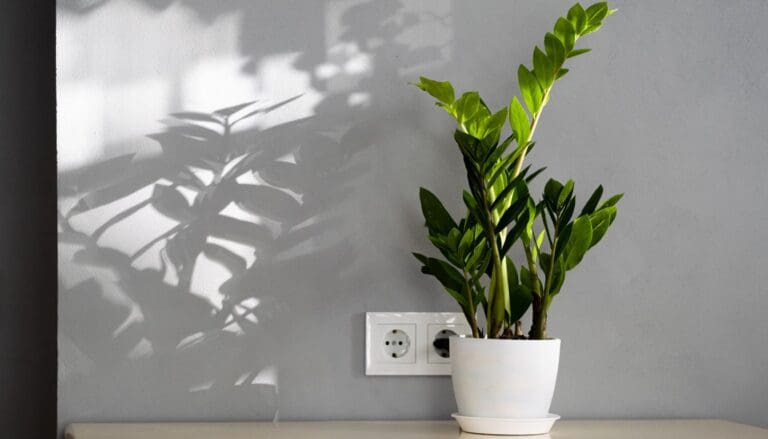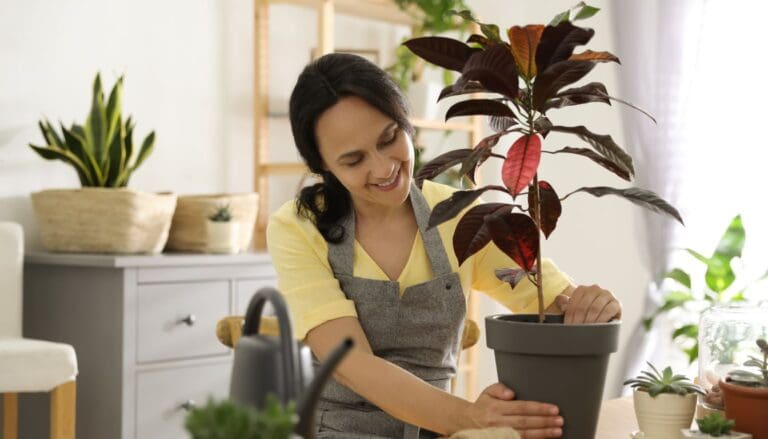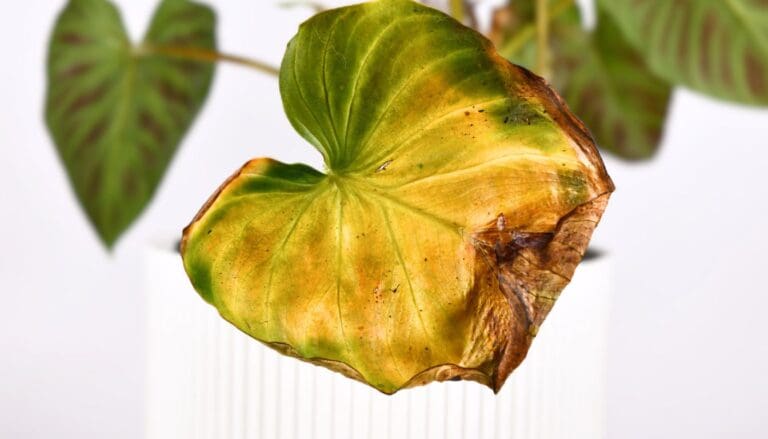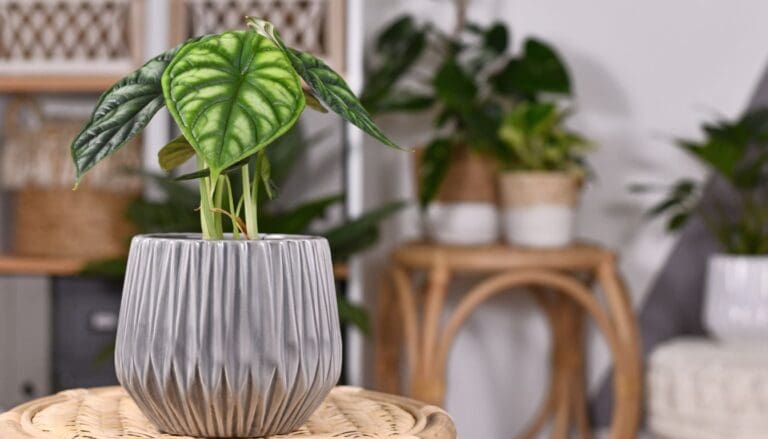English Ivy Temperature Tolerance: Ideal Temperature+High/Low Range
English ivy plants have gained popularity due to their easy-growing nature. They adapt to various conditions because of their hardy and resistant nature. If you want your Ivy to flourish, you must understand its temperature requirements.
English Ivy can tolerate a wide temperature range, but the ideal temperature range is between 70-90°F. Some varieties can tolerate as low as -10°F and as high as 115°F but for brief periods. This plant can’t tolerate scorching summer or extreme cold and frost for too long.
In this article, I will discuss the temperature range English ivy can tolerate and the precautions you must take to protect them from high heat and frost.
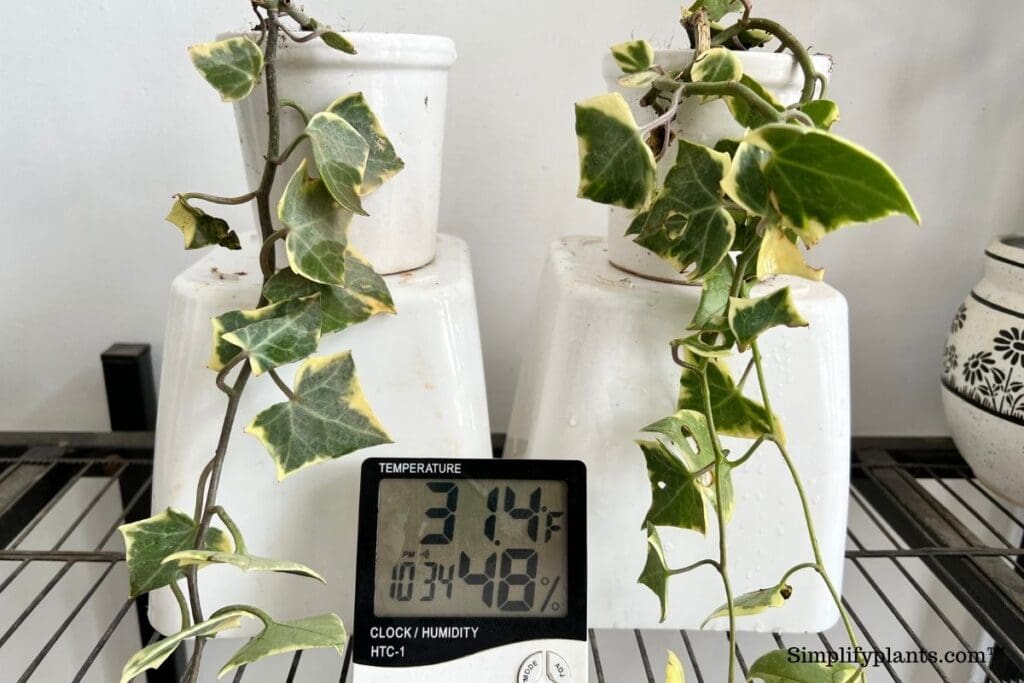
Please note: Simplify Plants is reader-supported. Some links in the post are affiliate links and I get a commission from purchases made through links in the post.
How cold can the English Ivy tolerate?
Schefflera enjoys being in a steady temperature that is neither too hot nor too cold and with medium humidity.
They can be grown outdoors in USDA zones 4 through 13.
According to the Missouri Botanical Garden, certain variants of the ivy plant can tolerate the hard cold of up to -10°F, while some other variety is only cold hardy in the USDA zone 10.
However, exposure to such low temperatures for a longer period will harm the plant in the future.
I recommend if you live in regions where winters are extremely harsh, do not risk the health of your English ivy.
Shift your Ivy indoors or to a covered spot that stays protected from the frost and cold winds if the temperature drops drastically.
English Ivy growing in the ground is more resistant than those growing in pots outdoors.
The foliage may get shriveled, and the leaves may wilt, but the plants in the ground have higher chances of bouncing back in spring than those in pots.
Can you leave English Ivy outside?
Though English Ivy is hardy in USDA zones 4-13, you must take special care in the colder regions.
Your plant can grow outdoors happily in areas with moderate winters and warmer conditions all year round.
But the potted English ivy has a chance of getting killed by frost.
So if you live in areas with hard frost, you must shift the plant to a spot that has warmer and more comfortable conditions for the plant.
Let the soil dry out between watering, and let your English ivy get a lot of sunlight in the winters to get the required warmth.
Mist the plant once in a while in the morning so that the leaves stay clean and can photosynthesize.
When should I bring my English Ivy inside?
I lost my English ivy 2 years back when I made the mistake of leaving it outside in winter.
Bring your potted Ivy indoors in case of a deep freeze.
While most ivies are cold resistant, they lack direct access to the soil cover when grown in pots or containers, which helps them stay warm.
Therefore the Ivy that grows in the ground can withstand far lower temperatures than those that grow in pots that are more sensitive to the cold.
Move it before the first frost hits, and the temperatures begin to drop after fall or at the onset of winter.
Do not wait for the frost to occur and move as that may risk the plant’s health.
Ideal temperature range for English Ivy

Though you cannot always maintain the ideal temperature range, try to stick as close to the range as possible.
English ivy plants have the best growth in temperatures between 70-90°F.
Though they can tolerate temperatures outside this range for a shorter time, prolonged exposure will be harmful.
The plant’s growth will be poor.
Too much heat and wind can dehydrate the plant, make the leaves turn yellow, and the plant might begin to wilt.
Hot and humid weather also makes English ivy plants susceptible to pests and fungal infestations.
Similarly, this plant will not thrive in very cold frosty winters.
Though some variants can grow in the Northern states in temperatures as low as -10°F, their growth will get compromised.
How cold is too cold for an English Ivy?
English ivy is one of the cold-hardy indoor plants.
However, long-term exposure to extreme cold can be detrimental to its growth.
They need full to partial sunlight, humidity, and steady temperatures, which in winters is not available.
In winters, the air is very dry, and the temperatures keep fluctuating, so the plant finds it harder to stay hydrated.
The low light intensity in winters reduces Ivy’s capacity to photosynthesize, which makes it weaker due to a lack of food and energy.
Though these plants do not go fully dormant in winters, their growth significantly reduces due to unsuitable growing conditions like low light, extreme cold dry air, etc.
However, with the advancement of warmer months, these plants bounce back quickly and resume their growth.
English Ivy is known to suffer major cold injury in extremely low temperatures and frost, where they begin to develop brown spots in the foliage and wilt.
Prune off the leaves that turn brown or pale due to the injury because they will not return to green.
Pruning them off will help the plant not waste its energy on those leaves and instead store it for them.
Some of the common problems seen in ivy plants in winters are:
- Brown spots
- Yellowing of leaves
- Wilting
- Droopy weak plant
How do you protect English ivy in winter?
In regions of harsh cold, you must keep your plants warm during winters.
Let us understand the different ways of making your English Ivy survive the winters.
Bring it indoors
Bring your English Ivy indoors at the onset of winter.
However, they have certain requirements that require some attention.
For example, this plant requires a lot of sunlight and moderate humidity.
Prune the yellow and dead parts

A plant can waste energy to keep the yellow-brown or dead parts attached.
So clearing those unnecessary parts helps the plant utilize that energy in making food and producing new growth.
However, do not prune aggressively and only remove the dead parts.
Maintain the humidity
Humidity helps keep any plant hydrated and healthy.
In winters, English Ivy suffers because of the dry air, which is unsuitable as it requires at least 40% humidity.
The dry air makes the plant droopy and makes leaves yellow.
A humidifier is a great way to increase humidity and keep the plants comfortable in winters.
Misting is also an effective way.
However, mist only in the morning so the leaves do not stay wet.
Cut off fertilizing
In winters, the plant becomes less active and does not require any fertilizer.
If you fertilize the soil in winters, you risk root burns in the Ivy.
Reduce watering
Overwatering is a major cause of plants dying indoors.
Due to low light levels and low activity in winters, the water absorption capacity reduces.
This keeps the soil wet for longer, increasing the chances of root rot and fungal diseases.
You have to drastically cut down watering in winters and let the soil dry out in between watering.
If you think you have overwatered your Ivy, you must stop watering and move the plant to a sunlit area where it will get direct sunlight for at least 2-3 hours and remain in bright light for the rest of the day.
Mulch
Mulch covers the soil surface with 1 inch of dried leaves, twigs, barks, and other organic matters to keep it warm and prevent moisture loss.
Although this is mainly used for outdoor plants, you can do it for your indoor English Ivy to keep it warm in the harsh cold.
Keep the Ivy away from cold drafts and frost.
Keep the plant at a spot where it remains shielded from cold wind and frost.
Do not keep the plant near glass panes where the leaves get rubbed against frosty glass panes, which can cause further stress to the plant.
Do not propagate or repot
Winters are a bad time to repot or propagate your plant.
Because of the plant’s low energy levels in winters, repotting or propagating any plant puts it at greater risk due to the low energy.
It finds it challenging to overcome the stress.
The ideal time to propagate or repot English ivy plants is the growing season which is spring and summer.
Because the plant is very active that season, it can quickly overcome stress.
Effects of high temperature on English Ivy

English ivy is equally sensitive to scorching heat as harsh cold.
In extremely hot summers, you must shield the Ivy from direct intense sunlight.
Though English Ivy enjoys direct sunlight in winters, it needs protection from direct sunlight in summers as the intensity of sunlight is more extreme.
Those that grow in the ground can tolerate more heat than the potted ones.
Some common problems English ivy faces in summers are:
- Yellow or brown spots
- Leaf burns
- Soil drying to frequently
- Wrinkled and shriveled leaves
- Wilting
How do you keep the English Ivy cool during scorching summers?
Let us discuss ways to keep your English Ivy cool in scorching summers:
Keep the soil evenly hydrated.
Summers are the time for most plants to thrive and grow rapidly.
The scorching summers absorb a lot of moisture from the plant.
Therefore, you need to keep the soil hydrated.
Ensure the soil is evenly moist.
You can add compost to the soil to keep it moist and well-draining.
Shield from direct sunlight

The sunlight is extremely intense in summers.
Therefore, it is important to protect the plant from intense sunlight.
Maintain humidity levels
English ivy thrives in humid areas and requires at least 40% humidity.
Invest in a humidifier to maintain the humidity levels.
If you cannot get one, misting and pebble trays are also good options.
But always mist the plant only in the morning so that water evaporates.
Keep the plant away from AC and heaters.
Keep your Ivy at a spot where it does not stay too close to heaters or ACs as they tend to suck up the moisture from your plant, leaving it dry.
How do we maintain the correct temperature for the English Ivy?
Here are some tips for maintaining a steady temperature around your Ivy:
- Ensure that you choose the right spot for the Ivy depending on the temperature and the plant’s requirement.
- If you are unsure about the temperature where you want to keep the plant, use a thermometer to measure it.
- Keep the English Ivy away from vents, drafts, or doors and windows that are frequently opened and closed all day as these areas have fluctuations in temperatures.
- In summers, keep your Ivy at the spot where the direct sunlight will not scorch it but get plenty of indirect bright light.
- In winters, choose an east-facing or south-facing spot where it can get a few hours of direct sunlight and lots of bright light.
- Do not keep the Ivy near your fireplace or heater, hoping to warm it up in winters because that would only dry up your plant and suck the moisture. You can keep it in the same room, maintaining a few feet of distance.
- If your Ivy is kept at a spot where it gets direct sunlight or hot air, put up a sheer curtain to shield it.
- Alter the watering routine as and when needed. In summers, it would need frequent watering to keep the plant hydrated, but in winters, you need to cut down on it and let the soil dry.
- Fertilize the Ivy only in spring and summer.
- Maintain 40% relative humidity around the plant at all times. Use a humidifier for best results.
- Mist your plant periodically in the morning to keep the foliage clean
Can English Ivy be kept in AC rooms?

Yes, you can keep your English ivy in a room with an air conditioner though it is not recommended for the long term.
However, if you keep the Ivy in an air-conditioned room, ensure the cold air from the ac should not directly fall on the Ivy as that will suck out moisture from it and leave it dry and wilted.
And in case you wish to keep the plant in the ac room, ensure you maintain some humidity around the plant.
A pebble tray is an effective option.
Just fill a plate with pebble and water and keep the plant on top of it.
Make sure the water does not touch the pot directly.
Final words
English Ivy does well in temperatures between 70-90°F, but it can tolerate some variations. Try to maintain the ideal range to see your Ivy grow and thrive.
Protect your English Ivy from extreme low and high temperatures. If you have a potted Ivy, consider bringing it indoors when the temperatures fluctuate or go extreme.
Change your care routine with the change in temperatures and seasons, and your English Ivy will flourish.
Reference: Researchgate, University of Tennessee, Mississippi State University, Central Florida Research and Education Center, U.S. DEPARTMENT OF AGRICULTURE.
Recommended Garden Supplies
| Product Image | Our Recommended Gardening Supplies | Check Offers! |
|---|---|---|
Top Top
Top
Top
Top
Top
Top
Top
Top | rePotme Houseplant and Tropical Classic Potting Soil Mix | Check Offer On Amazon |
 Top
Top
Top
Top
Top
Top
Top
Top | Espoma Organic Indoor Plant Food | Check Offer On Amazon |
 Top
Top
Top
Top
Top
Top
Top
Top | GooingTop LED Grow Light 6000K Full Spectrum Clip Plant Growing Lamp | Check Offer On Amazon |
 Top
Top
Top
Top
Top
Top
Top
Top | Soil Moisture Meter | Check Offer On Amazon |
 Top
Top
Top
Top
Top
Top
Top
Top | Govee Hygrometer Thermometer, Bluetooth Enabled! | Check Offer On Amazon |
 Top
Top | LEVOIT Humidifiers for Large Room(Best For Plants) | Check Offer On Amazon |
 Top
Top
Top
Top
Top
Top
Top
Top | Upgraded DIY Automatic Drip Irrigation Kit, 15 Potted Houseplants Support | Check Offer On Amazon |
 Top
Top
Top
Top
Top
Top
Top
Top | Stainless Steel Heavy Duty Gardening Tool Set | Check Offer On Amazon |
 Top
Top
Top
Top
Top
Top
Top
Top | Bonide Insecticidal Soap | Check Offer On Amazon |
 Top
Top
Top
Top
Top
Top
Top
Top | Bonide 32 oz Spray Neem Oil for Organic Gardening | Check Offer On Amazon |
 Top
Top
Top
Top
Top
Top
Top
Top | Garden Safe Fungicide | Check Offer On Amazon |


